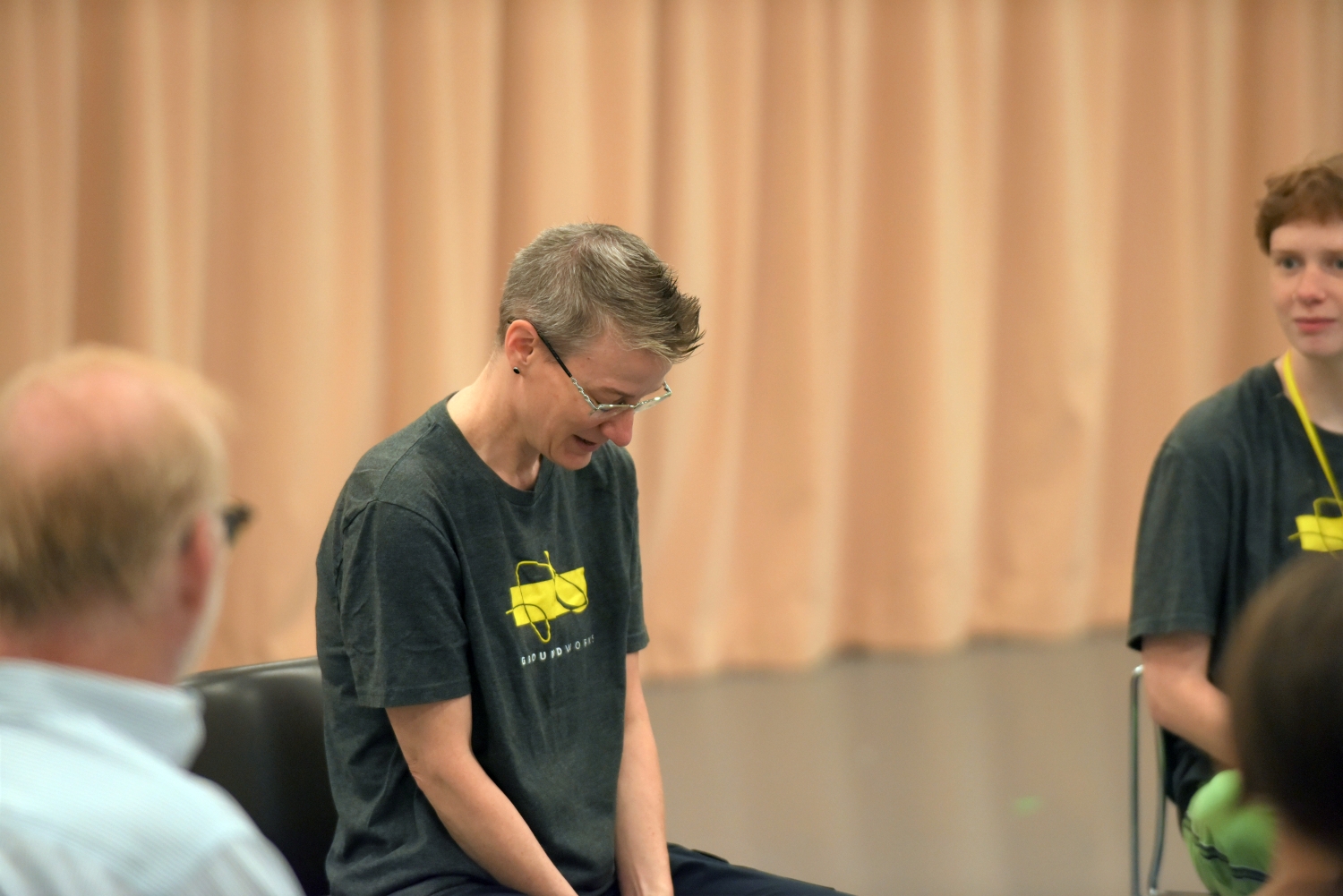
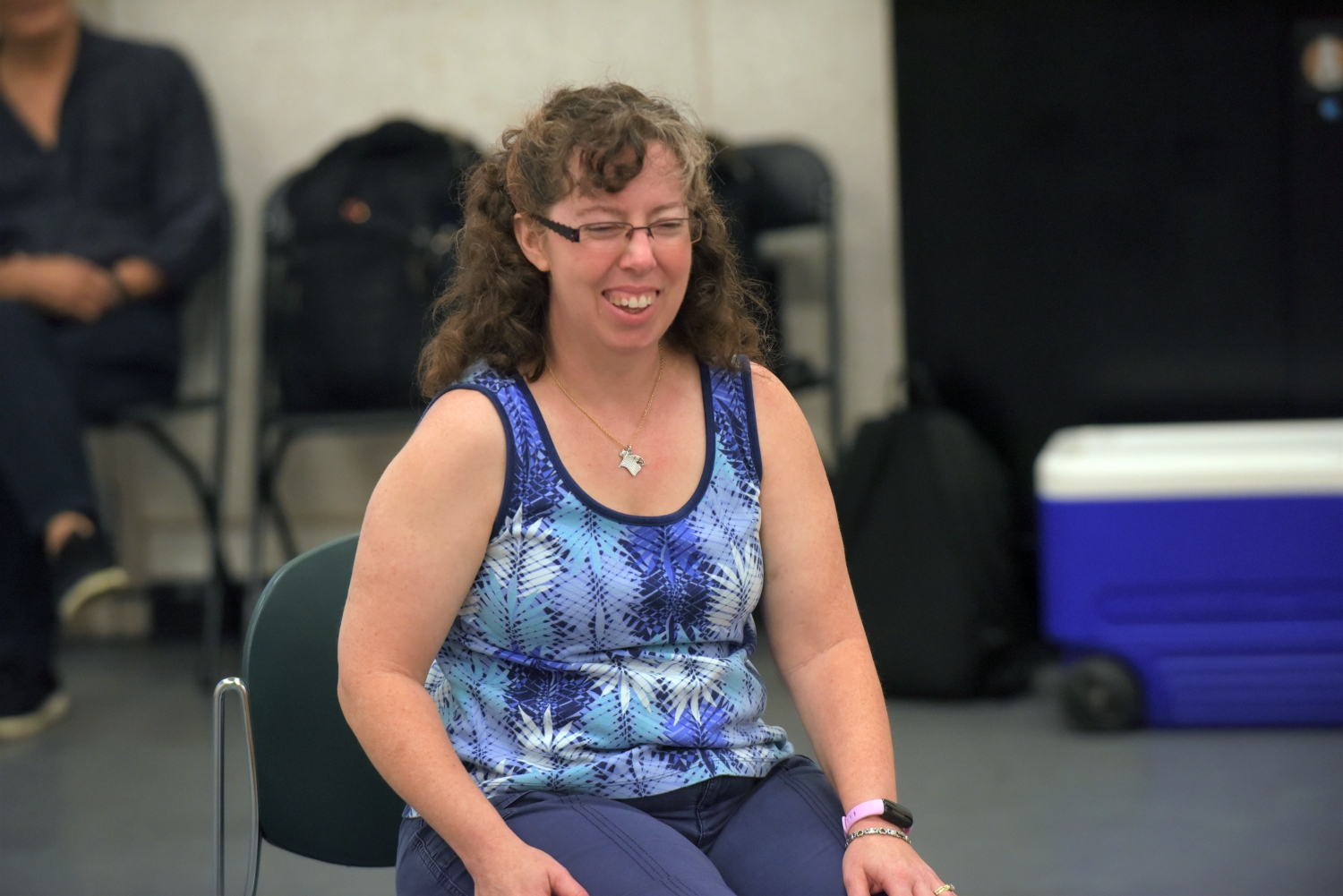
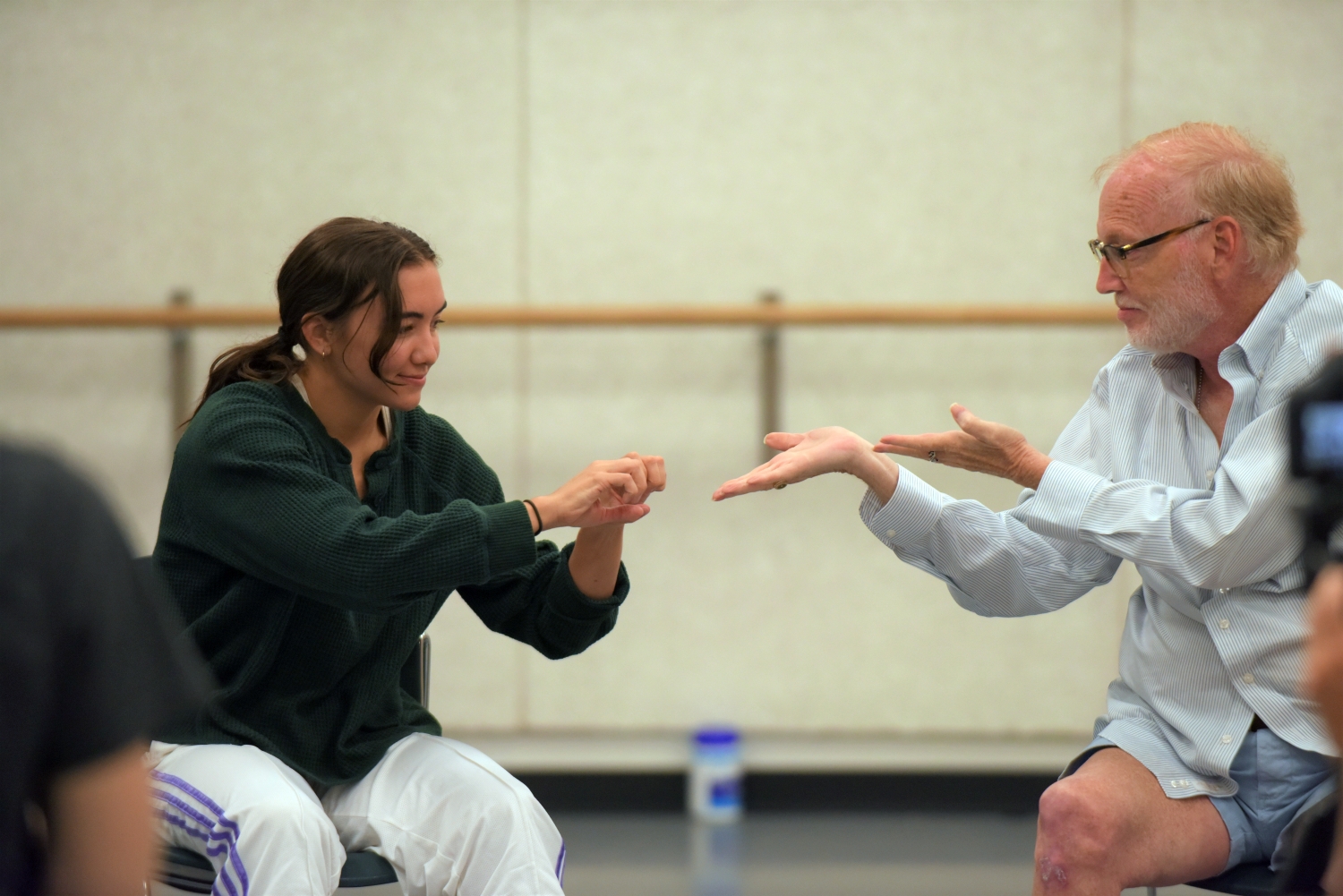
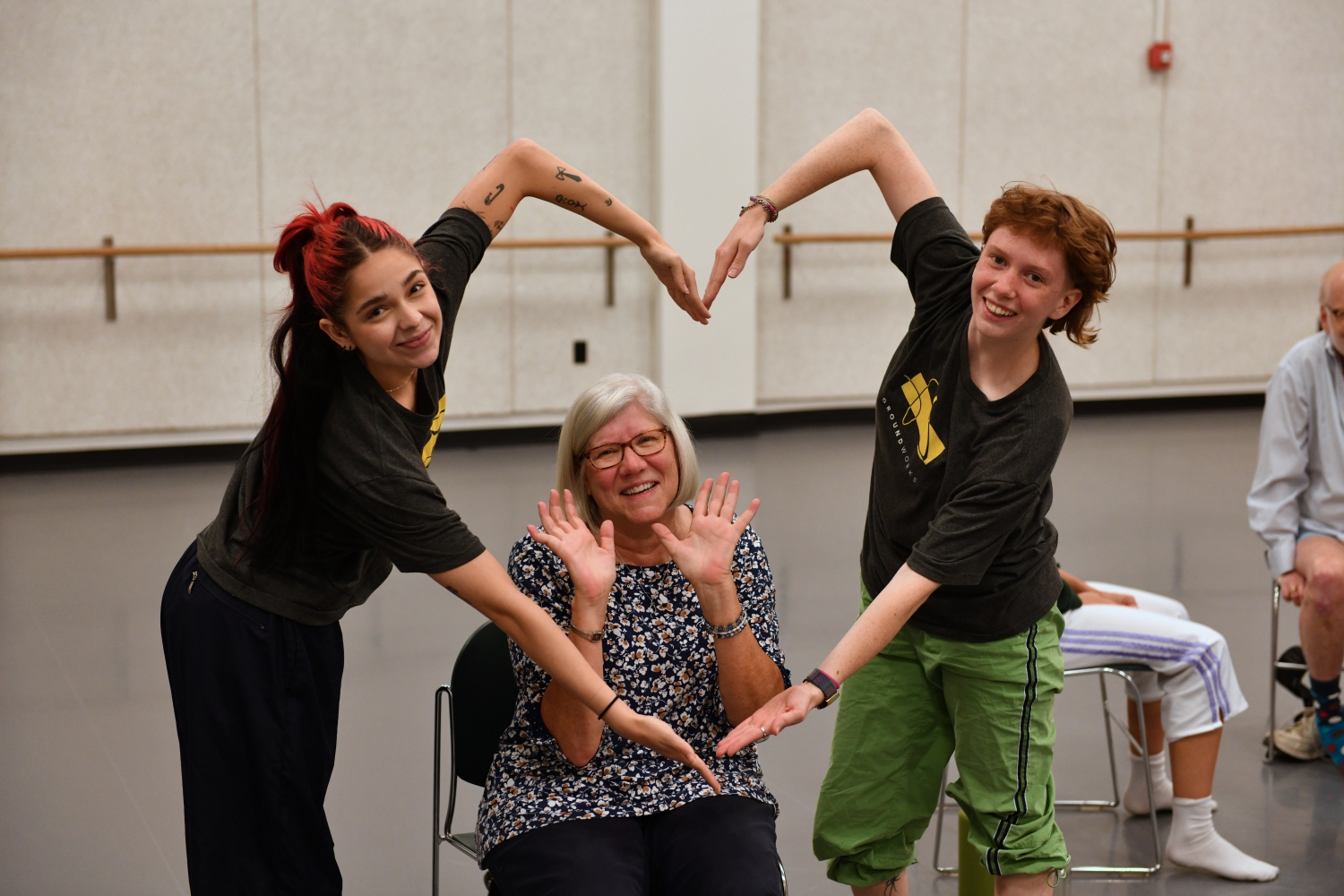
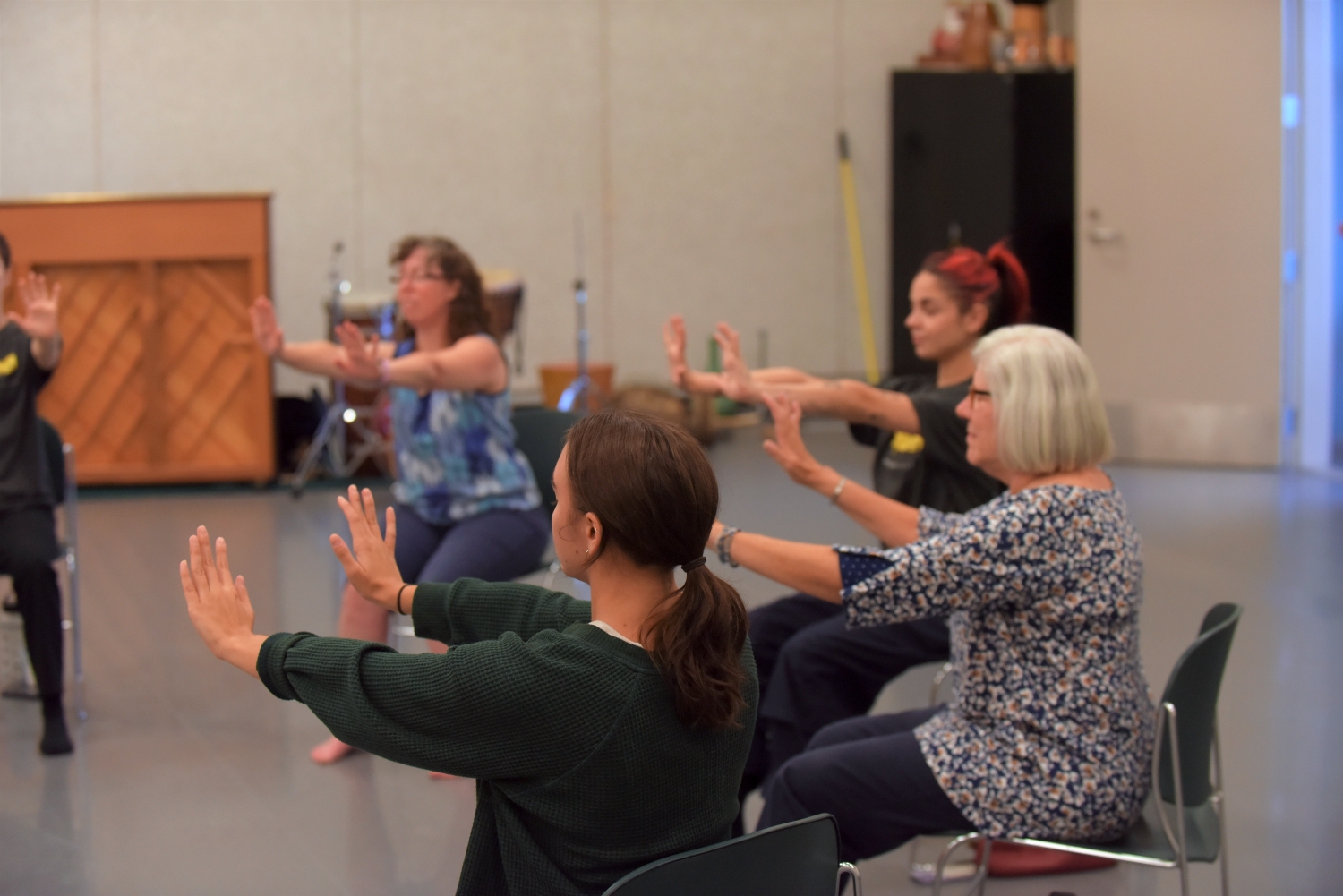
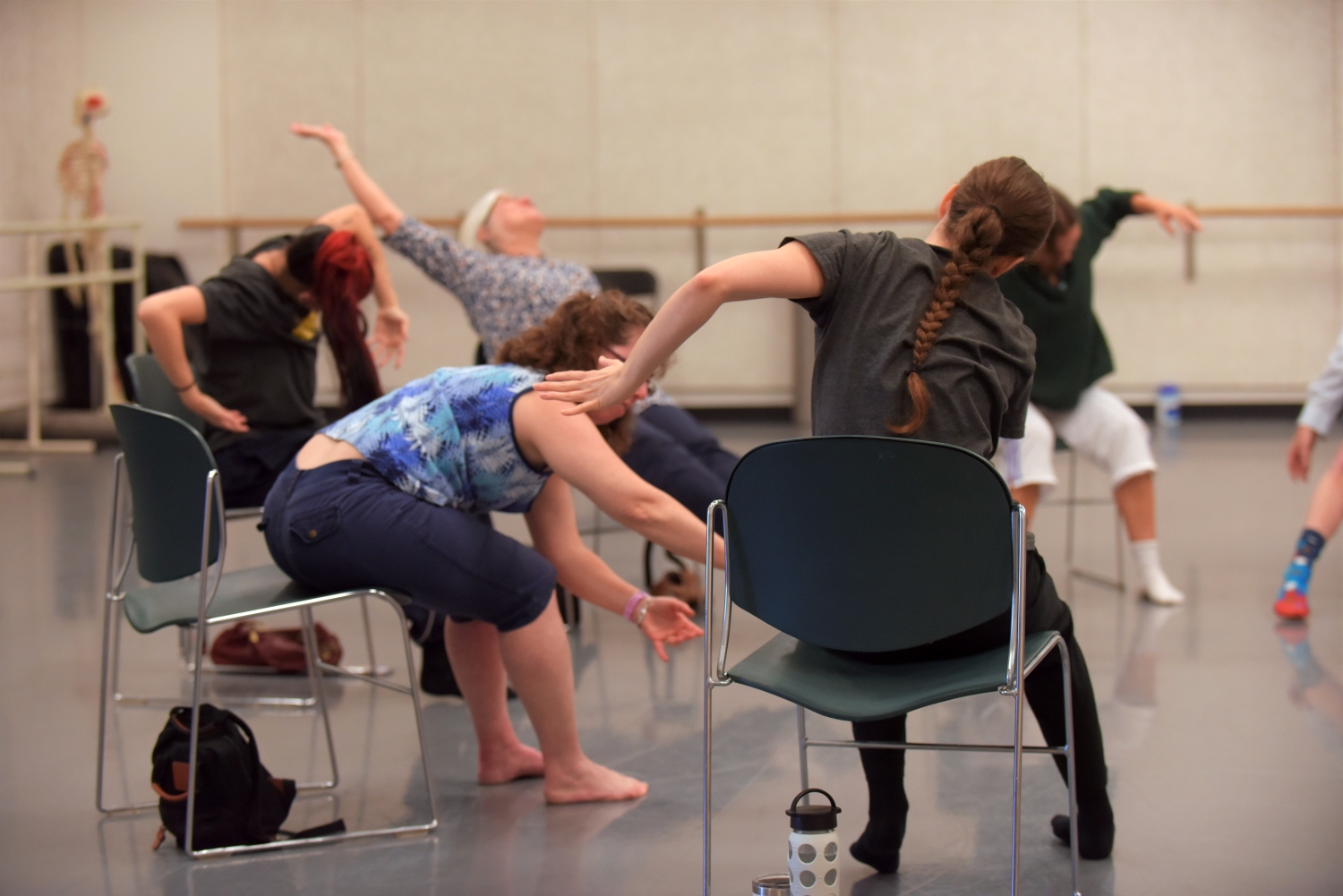
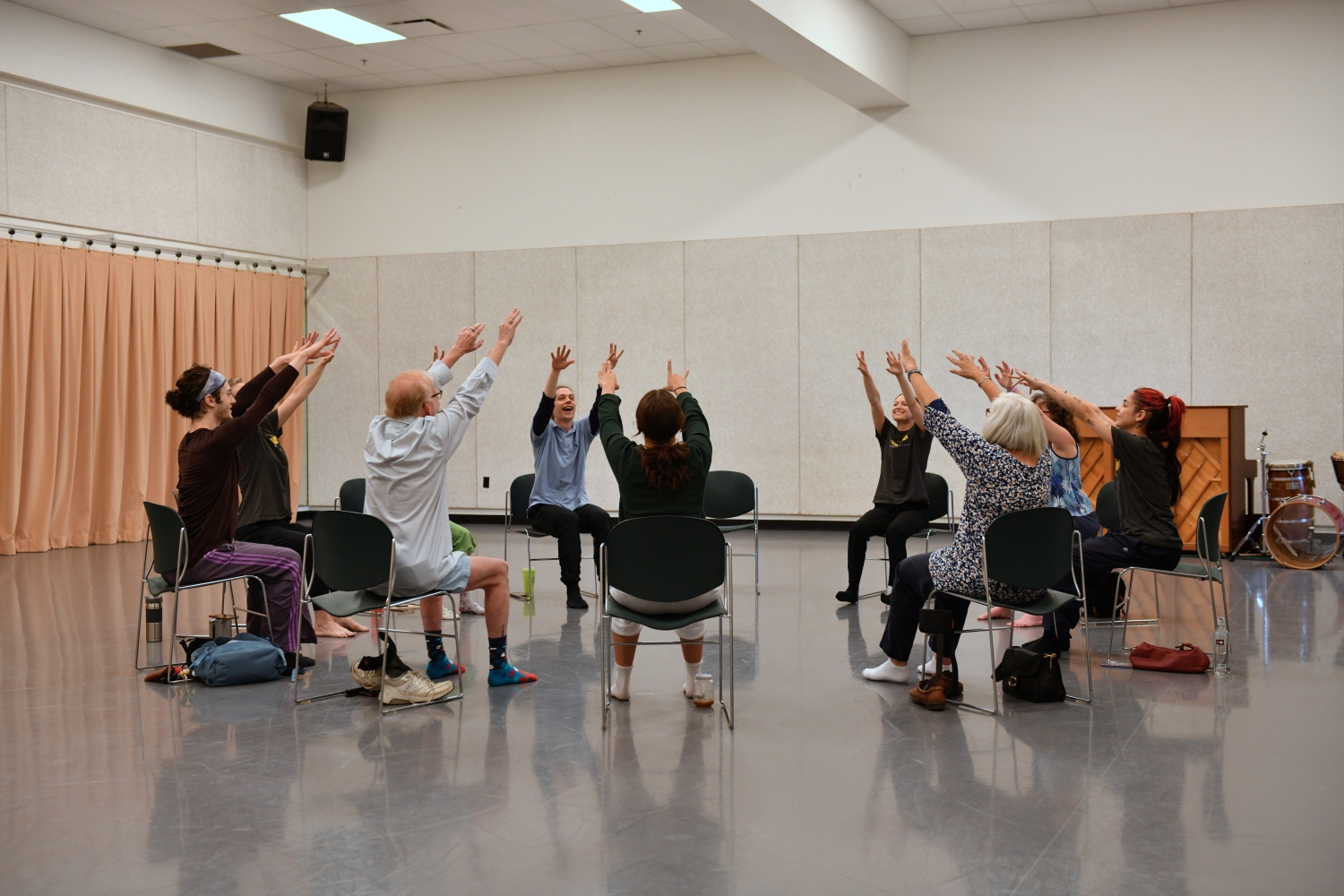


By Steve Sucato
In our ongoing efforts to enrich the lives of Northeast Ohio residents through dance and movement, GroundWorks DanceTheater embarked on its latest initiative, Moving MS, this past May-July 2023.
The seven week research study was a partnership between GroundWorks, the Cleveland Clinic, and Cleveland State University (CSU). Funded by a National Endowment for the Arts grant, Moving MS addressed significant needs in the Multiple Sclerosis (MS) community, including social-emotional well-being, body awareness, and gross and fine motor function.
PREPARATION
Before working with the study’s six adult participants, GroundWorks Director of Education & Community Engagement Joan Meggitt and her teaching staff participated in three training sessions with medical professionals at the Cleveland Clinic. The first was a two-day session led by Cleveland Clinic Mellen Center’s Director of Rehabilitation, Dr. Francois Bethoux, and Clinical Rehab Specialist, Dr. Randy Karim. Each, says Meggitt, gave detailed presentations about multiple sclerosis and working with those living with it. Meggitt led the other two training sessions, passing along information learned in the first session to GroundWorks’ five company dancers, who rounded out the teaching staff.
RESEARCH SESSIONS
The research sessions were held at CSU twice a week and were led by Meggitt assisted by GroundWorks’ teaching staff. Also on hand were Cleveland Clinic research coordinator for Moving MS, Andrea Bischof-Bockbrader, BA, PTA, and Dr. Douglas Wajda, an Assistant Professor and member of the Health and Human Performance Department in the College of Education at CSU.
A typical session, says GroundWorks company dancer Victoria Rumzis, began with warm-up exercises inspired by Anne Green Gilbert’s Brain Dance. Those involved the participants using their hands to pat themselves to stimulate the central nervous system and blood flow, along with other energizing movement exercises.
“With those, we are getting the body warmed up and tapping into feeling and sensation,” says Rumzis.
A 1:1 ratio existed between the participants and the teaching staff, and each participant was paired with the same instructor throughout the study, which Rumzis says built strong connections between the participants and staff and aided in addressing needs and a sense of being there for the participants physically and emotionally.
The main exercises used with the participants in the study came from existing GroundWorks teaching methodology and included mirroring, with the participants trying to mirror movement shown to them by GroundWorks’ teaching staff; inscription, which involved writing using the motion of one’s hands and other body parts in the space around them; and the game, “I come from” in which participants come up with two words describing where they come from either geographically, culturally or ancestrally, and then create two movements to illustrate their two words.
Another favorite exercise utilized in the study was one borrowed from dance educator Liz Lerman that Meggitt describes as akin to a group-directed game of Simon Says. In it, participants take turns either announcing to the group, “What if I?” and then demonstrate some improvised movement to the others, or saying, “What if we?” in which all the participants in the room do the same movement the person speaking showed.
All of these exercises were to help hone the participants’ body awareness and motor function and stretch and strengthen their limbs.
“The dancers and the participants were all together. Everyone did everything,” says Meggitt. “Some activities were done within each dancer/participant dedicated partnership, while others in quartets or with the entire group.”
Added into the mix of activities, each of GroundWorks company dancers brought an additional task or exploration from their own experiences and teaching playbooks. Those included one introduced to the group from Madison Pineda in which one imagines a goldfish swimming around the inside of your body and how that would feel or manifest in movement reaction as it swam through different body parts. The activity morphed into having multiple goldfish swimming inside you and participants being able to pass those fish to another person. Teagan Reed did an exercise where participants used their hands to create frames to see each other through. Rumzis looked specifically at Activities of Daily Life (ADL), such as putting on a seatbelt and retrieving a glass from a cupboard.
Meggitt says she didn’t want the study sessions to be solely a series of exercises where the teaching staff demonstrated and the participants did what was shown. “I wanted it to be more about facilitating movement,” says Meggitt. “Every person finding their way within the goals and objectives set for their physical well-being and creativity. Our work is most successful and fulfilling when people make their own choices about what they are doing.”
Each session concluded with a bow, a tradition of many dance practices. In ballet, “reverence” is when the class participants bow or curtsy to pay respect to and acknowledge the instructor. Meggitt says she approached reverence differently. “Since we were all in this together, everyone gave and received a bow that showed off the participant’s skill and acknowledged another.”
OUTCOME
“One of the things that I particularly appreciated about this experience is that everyone was committed from the start,” says Meggitt. “Everyone brought their full selves to the process and supported everyone else wholeheartedly.”
Meggitt says she also observed that the participants’ movement and ideas had become more expansive. “They were taking risks and brought a lot of humor, laughter, and joy to the sessions.”
Before the Moving MS study began, each participant engaged in a three-component pretest with medical professionals at the Cleveland Clinic to measure aspects of their social-emotional well-being, body awareness, and gross and fine motor function. Included were a Timed Up and Go (TUG) test in which the participants were timed standing up from a seated position and walked a prescribed distance before returning to sit; a peg test in which participants remove nine pegs from a board with one hand and then put them back in the holes using the same hand. Participants performed the test using both the left and right hands; the final test component was a survey to gauge the participant’s current quality of life.
At the study’s conclusion, the participants were tested again in the same component test to measure any differences due to the study activities. The Cleveland Clinic will report on the data and analysis collected from the pre and post-tests.
Perhaps of equal importance to the Moving MS participants and GroundWorks’ teaching staff was their shared creative experience during their time together.
“Our eyes were opened to abilities that we thought lost but were merely dormant,” said one participant. “We had to learn new ways to make old movements…dance opened us to a world that was not lost but had to be accessed in new ways. Overall, dance provided a way to access freedom of movement, and having professional dancers work with us showed us what we could be and allowed us to relish what we are. We entered timidly and left impassioned and free.”
Says Rumzis, “I learned just how important community is and how important it is to create a safe space and environment for people to let go and explore, create, and connect. Dance and the arts are such great ways to build connections between people. It was lovely to watch how community was built throughout the study and witness everyone involved’s trust and confidence grow.”
That sense of community brought the Moving MS study participants and GroundWorks’ teaching staff back together again for a reunion class on August 22, 2023, at CSU. There, they revisited what made the study such a meaningful part of all their lives, along with the kinship felt that has lingered in their hearts ever since.
Photos from the Moving MS reunion class by Mark Horning.

